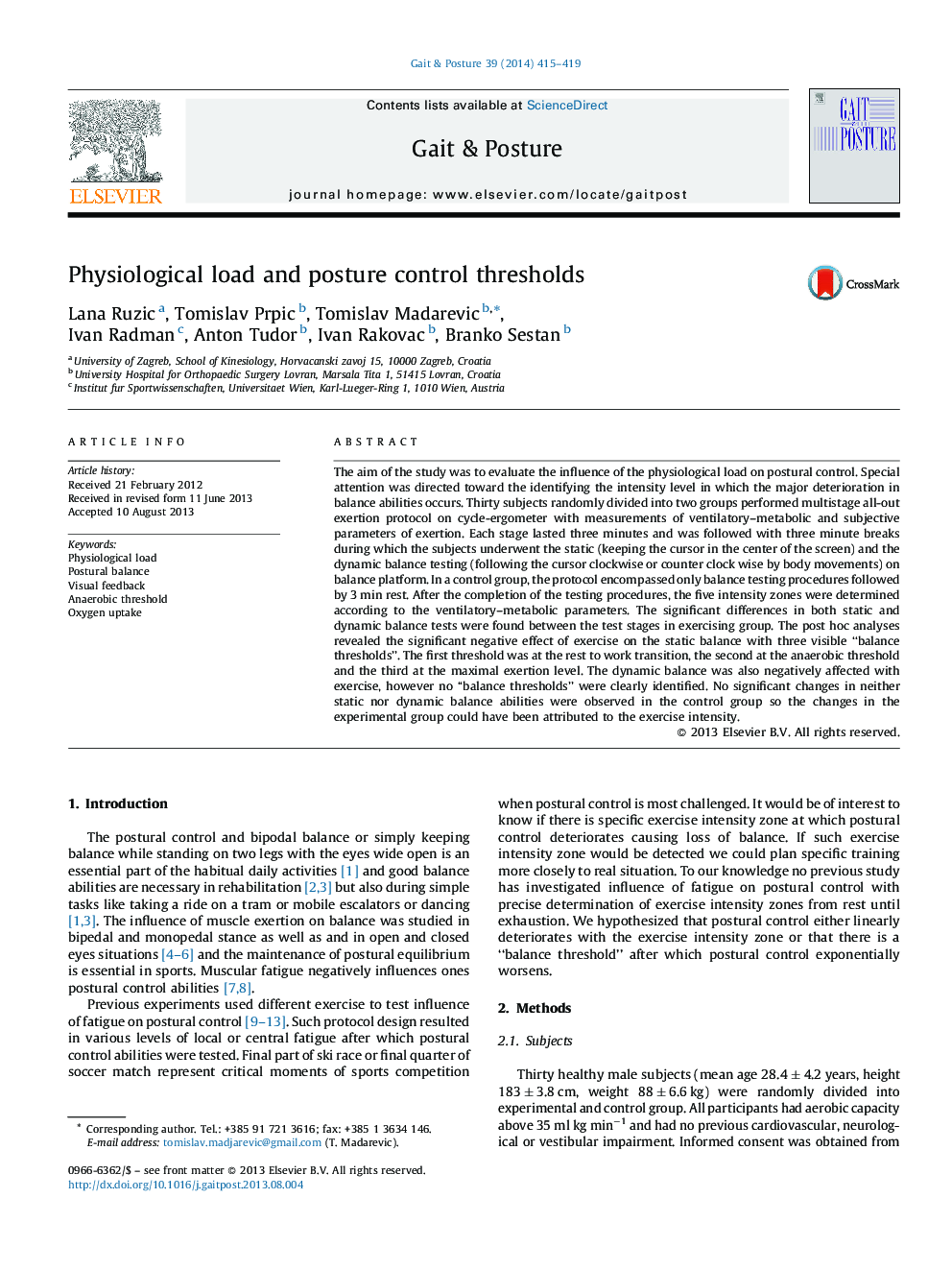| Article ID | Journal | Published Year | Pages | File Type |
|---|---|---|---|---|
| 6207064 | Gait & Posture | 2014 | 5 Pages |
â¢The physiological load influences balance.â¢The static balance and dynamic balance are both affected.â¢Already at the intensity 60-65% of HRmax the significant decrease of balance abilities happens.â¢Above the anaerobic threshold the additional decrease in balance occurs.
The aim of the study was to evaluate the influence of the physiological load on postural control. Special attention was directed toward the identifying the intensity level in which the major deterioration in balance abilities occurs. Thirty subjects randomly divided into two groups performed multistage all-out exertion protocol on cycle-ergometer with measurements of ventilatory-metabolic and subjective parameters of exertion. Each stage lasted three minutes and was followed with three minute breaks during which the subjects underwent the static (keeping the cursor in the center of the screen) and the dynamic balance testing (following the cursor clockwise or counter clock wise by body movements) on balance platform. In a control group, the protocol encompassed only balance testing procedures followed by 3Â min rest. After the completion of the testing procedures, the five intensity zones were determined according to the ventilatory-metabolic parameters. The significant differences in both static and dynamic balance tests were found between the test stages in exercising group. The post hoc analyses revealed the significant negative effect of exercise on the static balance with three visible “balance thresholds”. The first threshold was at the rest to work transition, the second at the anaerobic threshold and the third at the maximal exertion level. The dynamic balance was also negatively affected with exercise, however no “balance thresholds” were clearly identified. No significant changes in neither static nor dynamic balance abilities were observed in the control group so the changes in the experimental group could have been attributed to the exercise intensity.
